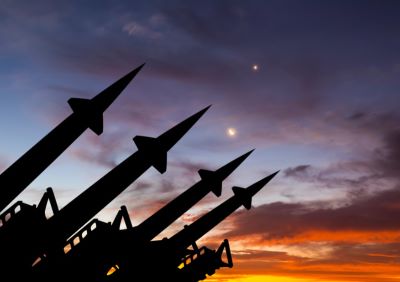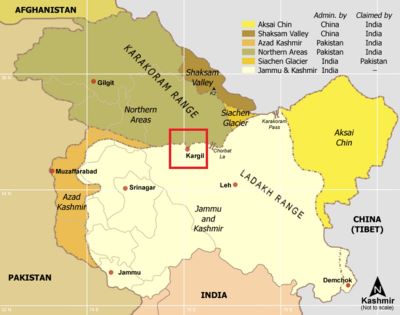Context:
The Kargil War, triggered by the infiltration of Pakistani soldiers and their occupation of territory on the Indian side of the Line of Control (LoC), occurred in 1999. The conflict garnered attention globally, not just because of the tense relationship between Pakistan and India but also because both were nuclear-armed states. This limited conflict, occurring between two nuclear-armed states, highlighted both the potential risks and the strategic importance of nuclear doctrines and command systems in managing escalation risks.
Nuclear Threats and Strategic Responses
Nuclear Implications and Threats
During the Kargil conflict, Pakistani officials, particularly then-Foreign Secretary Shamshad Ahmed, issued veiled nuclear threats after India escalated its military actions with infantry, artillery, and air attacks against Pakistani forces. Despite these threats, India adhered to its No-First-Use (NFU) policy and demonstrated strategic acumen by effectively combining military strategy and diplomatic efforts.
India’s Strategic Approach
India's response, characterised by Operation Vijay, involved a well-coordinated military campaign with 200,000 troops aimed at eliminating intruders without crossing into Pakistan Occupied Kashmir (PoK). Additionally, India leveraged international diplomatic support, especially from the United States, to pressure Pakistan to withdraw its forces.
Analysis of Pakistan’s Nuclear Strategy
Impact of Nuclear Weapons on Decision-Making
Many experts, including Timothy Hoyt and S Paul Kapur, believe that Pakistan’s decision to infiltrate Kargil was influenced by its possession of nuclear weapons. However, this view is debated, with some arguing that the historical antagonism and territorial disputes between India and Pakistan were more decisive factors. The conflict also demonstrated the limitations of nuclear weapons in achieving conventional military objectives.
Post-Kargil Realities
The conflict taught Pakistan that such operations have high political costs and damage its international reputation. Despite this, Pakistan has continued to use militancy and terrorism as tools of pressure against India. India's growing economic strength and shifting geopolitical alliances have influenced the balance of power, but diplomatic engagement remains essential for resolving bilateral disputes.
Lessons Learned and Strategic Adjustments
Impact on Nuclear Doctrine and Strategy
The Kargil War underscored the need for clear nuclear doctrines and robust command and control systems. India's response highlighted the importance of preparing for nuclear threats and maintaining a credible minimum deterrence. The conflict led to significant changes in India's nuclear posture, including the establishment of the Nuclear Command Authority (NCA) and enhanced crisis management frameworks.
Diplomatic and Defence Reforms
Despite the Kargil War's immediate aftermath, India continued efforts to foster positive bilateral relations through cultural exchanges, trade, and confidence-building measures. However, the slow pace of implementing the Kargil Review Committee's recommendations and the ongoing conflict with China highlight the need for more rapid and effective defence reforms.
Future Hazards and Implications
Deterrence and Preparedness
The Kargil conflict emphasised the importance of military readiness, nuclear deterrence, and diplomatic engagement. Pakistan's aggressive stance, supported by its nuclear arsenal, challenges India's security strategies and highlights the need for continuous improvements in defence and diplomacy.
Regional Stability and Global Stance
India's approach to addressing the Kargil legacy involves balancing robust defence reforms, enhanced deterrence capabilities, and proactive diplomacy. By focusing on comprehensive strategies, India aims to strengthen its national security while maintaining its diplomatic equilibrium.
Conclusion
The Kargil War has had a lasting impact on the nuclear strategies of both India and Pakistan. It highlighted the necessity of clear nuclear doctrines, robust command systems, and international diplomatic engagement in managing escalation risks. The lessons learned from the conflict continue to shape both nations' nuclear policies and military postures, contributing to ongoing efforts to maintain stability in South Asia. Addressing the legacy of Kargil requires a holistic approach that combines defence reforms, deterrence capabilities, and diplomatic efforts to ensure regional stability and improve India's global stance.
|
Probable Questions for UPSC Mains 1. Discuss the impact of the Kargil War on the nuclear strategies of India and Pakistan. How did the conflict influence the development and implementation of nuclear doctrines and command structures in both countries? (10 Marks, 150 Words) 2. Analyse the lessons learned from the Kargil War regarding the management of nuclear threats and strategic responses. How did the conflict shape India's approach to nuclear deterrence, military preparedness, and diplomatic engagement? (15 Marks, 250 Words) |
Source: ORF India








